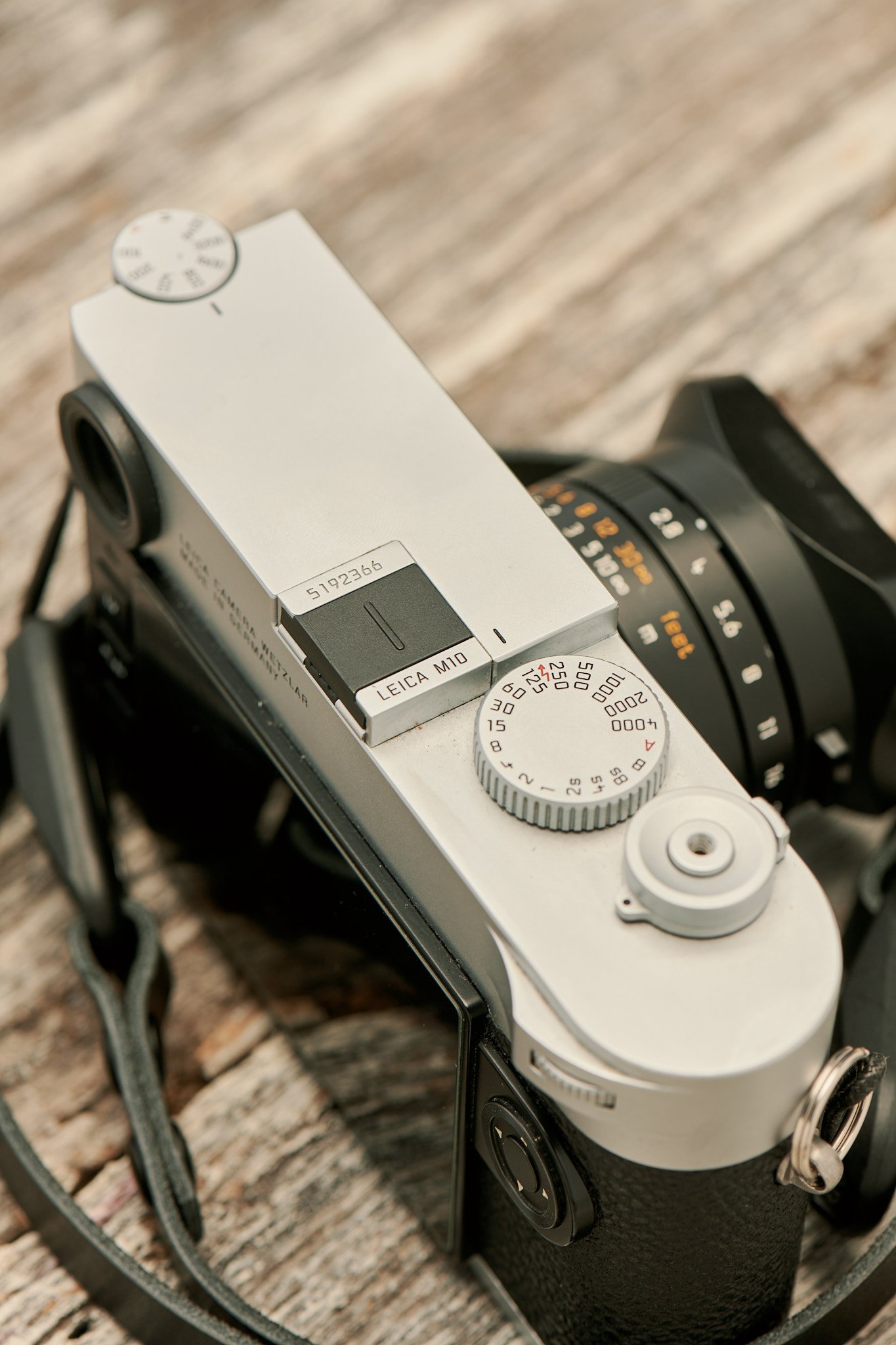My Leica M10 Story: 13 Years of Waiting—Was It Worth It?
Leica M10 2-Year Review: A Photographer’s Dream Realized
In November 2022, a lifelong dream came true—I purchased my first Leica camera. This was a moment I had been waiting for since high school. My first encounter with a Leica happened during my 2009 honeymoon in Chicago, where I got my hands on a Leica M8.2 at Calumet. At the time, I considered trading my full Canon setup for the Leica and a 50mm lens but held back. Thirteen years later, after a successful year for my business, I could finally sit down and make the leap. This review outlines why I chose the Leica M10, my lens selection, my initial and long-term impressions, and how I plan to move forward with this legendary camera.
The Leica Obsession
From the moment I started photography, I’ve dreamed of owning a Leica. My first camera was an Olympus RD35 rangefinder, and once I transitioned to SLRs, I missed the simplicity and elegance of the rangefinder experience. The Leica has always appealed to me because of its straightforward design and unobtrusive nature. I needed a camera that would slow me down, challenge my creative process, and encourage intentionality in every shot. The Leica M10 offered just that.
The Journey to Leica
When I finally had the means to buy a Leica, I began by renting various models to narrow down my options. I first rented the Leica Q2 Monochrome. It was a fantastic camera—small, lightweight, and with an amazing monochrome sensor—but I was after the full rangefinder experience. I then rented the Leica MD262, pairing it with a 50mm Summicron on a trip to New Orleans. That setup solidified my decision to invest in a Leica. You can check out my review of the MD262 here.
Why the Leica M10?
By the time I was ready to purchase, my options included the Leica M8, M9, MD262, M240, and M10R. Ultimately, I chose the Leica M10 as it was the most modern Leica I could afford, without the higher resolution of the M10R, which I didn’t need for my purposes. The M8, being a crop sensor, was not suitable for me, and the M9 had known sensor issues. While the M240 and MD262 were strong contenders, I wanted something more up-to-date without straining my budget.
I bought my Leica M10 and 28mm f/2.8 Elmarit from Tamarkin Camera in Chicago, and they made the buying process smooth and reassuring. They even offered me the option to return the M10 for an M10R if it wasn’t the right fit.
Initial Impressions
When I unboxed the Leica M10, I was overwhelmed. Thirteen years of anticipation culminated in holding this exquisitely crafted piece of equipment. The build quality was immediately evident.
• Rangefinder Experience: The viewfinder is bright, clear, and easy to focus. The large rangefinder patch offers crisp, accurate framing.
• Body Design: The compact body feels perfect in hand, with just the right balance of textured leatherette for grip. While the thumb rest is well-placed, I rarely use the command dial on the back.
• Ergonomics: Admittedly, the M10 isn’t the most ergonomic camera—it feels somewhat like holding a bar of soap—but its simplicity is part of its charm.
• Controls: The back of the camera boasts only three buttons, each intuitive and functional. The top-mounted ISO dial requires a lift to adjust settings, a slight inconvenience, but it has never failed. The shutter speed dial, on the other hand, is expertly designed, with a satisfying tactile response.
• Shutter Sound: The shutter is simply perfect—refined, soft, and elegant, providing just the right amount of feedback.
The Leica 28mm f/2.8 Elmarit
The 28mm Elmarit lens is a true gem. Compact and precisely built, its focus mechanism is smooth and precise. It complements the M10 perfectly, making for a lightweight and unobtrusive setup.
Image Quality: The M10 in Action
Now, this might ruffle some feathers, but in terms of raw image quality, the M10 doesn’t outshine all other cameras like my Nikon Z7, Z9, or the Pentax 645Z. The M10 has slightly more noise and less dynamic range, but where it truly shines is in color reproduction. The colors are rich, vibrant, and the files are highly flexible. Compared to my previous experience with the MD262, the M10 is a significant upgrade.
Two Years Later: My Verdict
Now, two years and over 10,000 images later, how do I feel about the Leica M10? I would buy it again in a heartbeat. It’s not the most ergonomic, nor does it offer the highest image quality in today’s market, but it excels as a camera that’s simply fun to use. I find myself capturing moments I might have missed or would have relegated to my cell phone. The M10 is easy to carry everywhere, and yes, my wife refers to it as “photographer jewelry”—and she’s not wrong. It’s a bit of a luxury item, but one that fills a unique niche in my workflow. When the M10 eventually reaches the end of its life, I’ll undoubtedly buy another Leica.
Final Thoughts
The Leica M10 isn’t for everyone, but for those who value the artistry of photography and the experience of shooting, it’s a dream come true. Whether you’re documenting everyday life or capturing behind-the-scenes moments, this camera will challenge and inspire you.

















